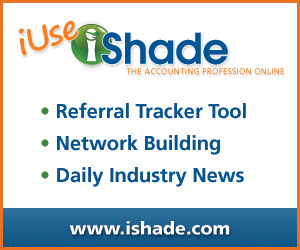
| February 1, 2012 | Issue #113-1 |
Damodaran’s first 2012 ERP, a data update--and Lady Gaga Professor Aswath Damodaran (NYU Stern School of Business) has just updated the implied equity risk premium (ERP) for the S&P 500 to 6.04% at the start of 2012, up from 5.20% at the start of last year. “The key factor behind the rise was the increase in cash flows (dividends and buybacks on the index) and the drop in the risk-free rate,” Damodaran explains in his first newsletter of 2012. “For those of you who prefer historical risk premiums, the updated geometric average risk premium for stocks over treasury bonds stands at 4.10% from 1928 to 2011, down from 4.36% last year.” Damodaran tracks the monthly ERP on his website’s data page, where his annual update is nearly complete. “I used the same sources as last year—Cap IQ and Bloomberg for non-U.S. companies and Value Line for U.S. companies,” he explains. “The industry averages are reported, as [are] the raw data on individual companies (about 41,000+, this year).” Although “flattered” by the wide use of his data, Damodaran cautions against potential misuse. “I have put down my thoughts on what the data [are] best suited for and some caveats that users should keep in mind here.” Finally, although Facebook scares the Professor for its “chaos of interactions,” he is currently on a self-described mission “to become the Lady Gaga of Finance,” and invites analysts to follow his monthly “tweet” of the ERP by joining his Twitter list. Is your firm’s compensation within the BV ballpark? Technical aptitude and experience pays in the BV profession: but how much? In the search for top BV talent these days, too often BV firms turn the question “what do we want to pay for that key new appraiser?” into “what should we pay?” Get the metrics: The 2012 Borrowman Baker-BVR Salary Survey is the only source of detailed, reliable compensation data on the BV profession. Its survey methodology is consistent with standards used by the leading compensation study firms—and it’s open for participation now. The more firms that participate, the more complete, valid, and reliable the results will be. High-security protocols protect data input to assure confidentiality; no data will be reported in any way that would identify any sources. To participate—and lock in your complete copy of the final 2012 BV benchmark report—click here. RICS to launch a new BV route to membership “Inconsistent business valuations could harm global growth and the ability to raise finance, causing mergers and acquisitions to fall through,” says a news release from the Royal Institution of Chartered Surveyors (RICS). “Determining the value of a business is an increasingly difficult endeavor in times of market instability, with valuations dependent upon regularly fluctuating elements,” they say. “This is further compounded by global differences in valuation models and assumptions, which lead to inconsistency in business valuation.” To “raise global awareness of BV standards,” RICS is launching a new route to membership, Valuation of Business and Intangible Assets, at its BV conference this week. RICS also plans to introduce a new edition of its Red Book (international valuation standards) and “guidance notes” in business valuation and the valuation of intangible assets this year. When hindsight is 20/20 in calculating construction claims The general rule in construction contract cases is to measure lost profits damages at the time of the breach, without considering subsequent events—including (in the latest cases) the collapse of the real estate market. Yet, some courts allow experts to factor post-breach economic conditions into their lost profits calculations, following the “Book of Wisdom” doctrine. The key question: when can an expert “unclasp” the rule of law to consider hindsight in determining construction damages? Complicating the issue in a recent case was the nature of damages; i.e., the losses arose from contracts collateral to the broken one, and so didn’t even exist at the time of the breach. The plaintiffs had secured leases to build two residential apartment towers by 2006, but the landlord decided to get a better deal—and blocked their attempts to get financing. By the time the plaintiffs got a court order to demand compliance, the real estate market had bottomed-out and so had the deal. The plaintiffs sued for lost profits based on 2006 projections, and after the defendants lost a motion to exclude post-breach market conditions, they tried to “re-tool” their rebuttal expert. Instead of critiquing the methods and assumptions used by the plaintiffs’ lost profits expert, the defendants’ financial expert went after the underlying real estate projections, which the court said he was not qualified to do. Read the complete digest of CR-RSC Tower I, LLC v. RSC Tower I, LLC, 2011 Md. App. LEXIS 141 (Oct. 26, 2011) in the in February 2012 Business Valuation Update; the court’s decision is posted at BVLaw. An up-to-date overview of construction damages: On Tuesday, February 7, join attorney George F. Burns (Bernstein Shur) for Lost Profits for Construction Claims. Part 7 of BVR’s Online Symposium on Litigation & Economic Damages will focus on the unique challenges posed by performing lost profits and economic damages analysis for claims in the construction industry, including how to account for evolving current market conditions. FASB issues ASU on indefinite-lived intangibles
Intangible assets such as indefinite-lived trademarks, licenses, and distribution rights, would be subject to the new standard, which would apply to all public, private, and not-for-profit organizations and would be effective for annual and interim impairment tests performed for fiscal years beginning after June 15, 2012, with the option for early adoption. Comments are due by April 24, 2012 to the exposure draft, which can be accessed here. During the comment period, “the Board will conduct additional outreach with preparers, users, and auditors of financial statements to solicit their input on the proposal,” the FASB says. AICPA also seeks input on Goodwill Impairment Practice Aid The FASB first introduced the concept of “step zero” under its Accounting Standards Update 2011-08, published last September, by which entities may review certain qualitative factors to determine whether goodwill impairment is “more likely than not,” explained Mark Zyla (Acuitas Inc.) during last week’s BVR webinar on the topic. If so, then ASU 2011-88 permits entities to skip the two-step quantitative test under ASC 350 (Intangibles—Goodwill and Other) altogether. To clarify, the recently proposed ASU 2012-12 extends the qualitative “step zero” testing for goodwill impairment to indefinite-lived assets—or “those assets for which the remaining useful life cannot be determined and therefore are not currently being amortized for financial reporting purposes,” Zyla now tells BVWire. “Under ASC 350, these assets are currently tested for impairment by comparing the fair value as of the test date to the carrying value—which differs from how goodwill or long-lived, amortizable assets are tested for impairment.” Reminder: Last fall, the AICPA’s Financial Reporting Executive Committee (FinREC) also issued its working draft of Testing Goodwill for Impairment (see BVWire #110-2). The exposure draft is “still open for comment,” says Zyla, a member of the task force that developed the guidance. “One area that we would particularly be interested in is the section and discussions on ‘Step Zero’.” As a BV practitioner, what guidance would you want to see in that area? For preparers, “what additional guidance would you like to see as far as the qualitative factors, beyond what was provided in the actual ASU and to help codify Topic 350?” Zyla asked. Comments are due March 15, 2012; for more information, click here. Don’t miss update on IPR&D practice aid The AICPA’s FinREC has certainly been busy. Last fall, in addition to the goodwill practice aid, the committee released Assets Acquired to be Used in Research and Development Activities for public comment. On Thursday, February 9, David Dufendach (Grant Thornton), a member of the FinREC task force that developed the guidance, will present The State of IPR&D: Examining the AICPA Exposure Draft, an hour-long discussion of the draft, its contents and current feedback, including how practitioners can participate in the comment process. New IRS filing requirements for executive compensation will require FMV determinations According to the most recent client alert by Fenwick & West LLP, the IRS has issued two forms (along with accompanying instructions) that corporations must use to satisfy the return and information statement requirements under IRC Section 6039:
The alert lists the information required by the new forms, including, respectively, the fair market value of a share of stock on the date the ISO was exercised and the fair market value of the stock on the date of purchase by the transferor under the ESPP. A good, continuing business opportunity for BV appraisers: In its “closing note,” the alert advises corporations to (i) discuss the FMV of common stock throughout the year with employees, to assist with estimated tax determinations on exercising an ISO, and (ii) value common stock delivered on the exercise of a non-qualified stock option for withholding tax purposes. ISCV seeks volunteers for investment properties project Following its recent decision to develop a new standard and technical guidance on Investment Property, the Standards Board of the International Valuation Standards Council (IVSC) has now prepared a project brief to examine certain aspects of the issue, such as the use of different valuation methods, valuation inputs, derivation of discount rates, treatment of purchaser’s costs, determining if a property can be reliably valued, and the impact of market inactivity. The IVSC is currently seeking volunteers for a working group to advise the Board and help move the project forward, according to the IVSC’s January 2012 e-newsletter. “Applications are welcome from valuation firms active in the sector . . . and other users of valuations in the sector such as analysts,” the Council says. For a copy of the Project Brief and an application form, interested parties may contact the IVSC Technical Director, Chris Thorne, by clicking here. The IVSC also notes that comments on the exposure draft, “A Competency Framework for Professional Valuers,” published last December, are due no later than February 28, 2012.
To ensure this email is delivered to your inbox, please add editor@bvwire.com to your e-mail address book. We respect your online time and privacy and pledge not to abuse this medium. To unsubscribe to BVWire™ reply to this e-mail with 'REMOVE BVWire' in the subject line or use the link below. This email was sent to %%emailaddress%% Copyright © 2012 by Business Valuation Resources, LLC |
|



